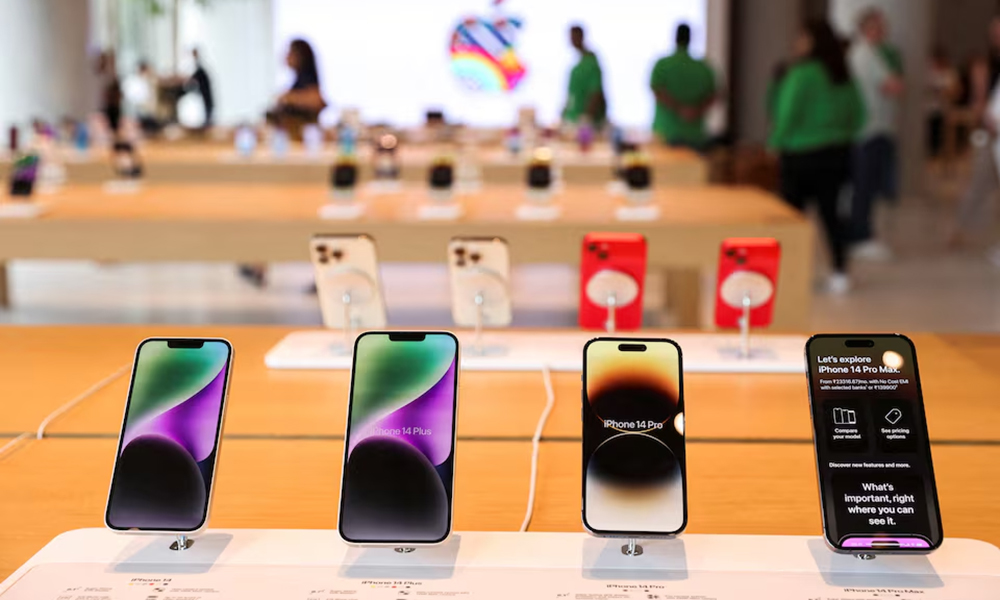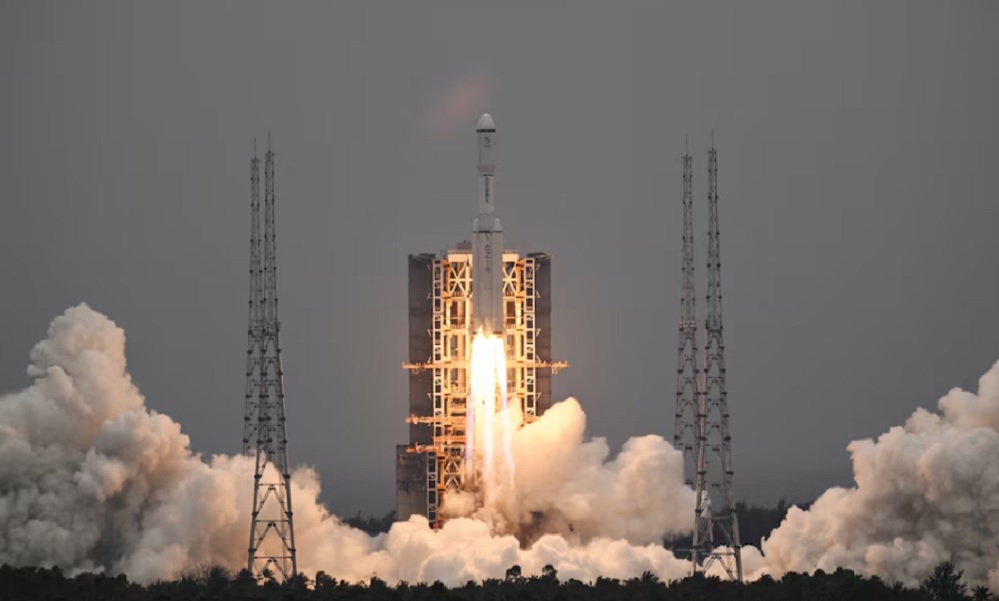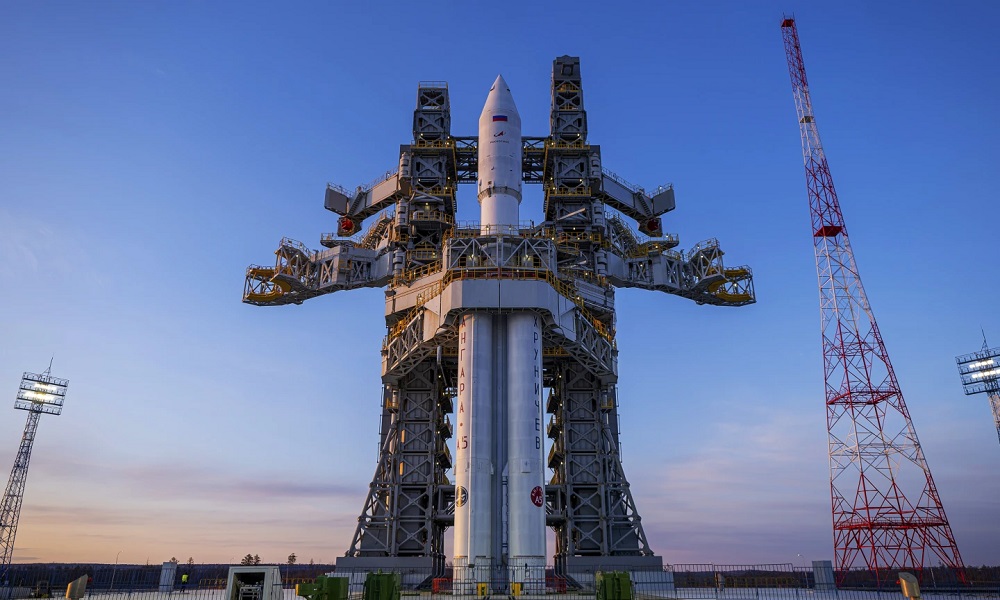Science & Technology
U.S. charges Apple ex-employee for trying to steal technology, fleeing to China

The United States on Tuesday announced charges in five cases involving alleged efforts to steal technology to benefit China, Russia and Iran including a former Apple Inc (AAPL.O) engineer accused of targeting the company’s technology on autonomous systems, including self-driving cars, and then fleeing to China, Reuters reported.
The cases detailed at a Justice Department press conference centered on allegations concerning the theft of trade secrets and other technology. Two of the cases involved what U.S. officials called procurement networks created to help Russia’s military and intelligence services obtain sensitive technology.
The five cases were the first announced by a U.S. “strike force” formed in February in part to protect sensitive technologies, though the investigations began before it was created, read the report.
“We stand vigilant in enforcing U.S. laws to stop the flow of sensitive technologies to our foreign adversaries,” Matt Olsen, the head of the Justice Department’s National Security Division, told reporters. “We are committed to doing all we can to prevent these advanced tools from falling into the hands of foreign adversaries.”
The former Apple engineer, identified as 35-year-old Weibao Wang, formerly resided in Mountain View, California, and was hired by Apple in 2016, according to an April indictment unsealed on Tuesday.
In 2017, he accepted a U.S.-based job with a Chinese company working to develop self-driving cars before resigning from Apple, but waited about four months before informing Apple of his new job, according to the indictment, Reuters reported.
After his last day at Apple, the company discovered that he had accessed large amounts of proprietary data in the days before his departure, the Justice Department said. Federal agents searched his home in June 2018 and found “large quantities” of data from Apple, it added. Shortly after the search, he boarded a plane to China, the department said.
Apple’s automotive efforts, known as Project Titan, have proceeded unevenly since 2014, when the company started to design a vehicle from scratch. A December report said Apple had postponed the car’s planned launch to 2026. Reports filed with the state of California show Apple is testing vehicles on the state’s roads.
Apple declined to comment on the case.
In a second case related to China, U.S. prosecutors announced charges against Liming Li, 64, of Rancho Cucamonga, California, for allegedly stealing trade secrets from his California-based employers to build his own competing business in China.
Prosecutors in New York charged Nikolaos “Nikos” Bogonikolos, 49, of Greece with smuggling U.S.-origin military technologies to Russia while he was operating as a defense contractor for NATO.
Russian nationals Oleg Sergeyevich Patsulya and Vasilii Sergeyevich Besedin were each charged in Arizona for allegedly using their Florida-based company to send aircraft parts to Russian airline companies, while the Commerce Department in a parallel action suspended their export privileges.
In addition, prosecutors in New York announced charges against Xiangjiang Qiao, also known as Joe Hansen, 39, for allegedly using a Chinese company that is the target of American sanctions to provide materials used in the production of weapons of mass destruction to Iran, Reuters reported.
Qiao and Wang remain at large in China, while the other four defendants were arrested, U.S. officials said.
Attorneys for Patsulya and Besedin, who were arrested on May 11, did not immediately respond to requests for comment. An attorney for Li did not immediately respond to a request for comment. Reuters could not determine who is representing Bogonikolos.
Science & Technology
Apple loses top phonemaker spot to Samsung as iPhone shipments drop, IDC says

Apple’s (AAPL.O), opens new tab smartphone shipments dropped about 10% in the first quarter of 2024, hurt by intensifying competition by Android smartphone makers aiming for the top spot, data from research firm IDC showed on Sunday.
Global smartphone shipments increased 7.8% to 289.4 million units during January-March, with Samsung (005930.KS), opens new tab, at 20.8% market share, clinching the top phonemaker spot from Apple, Reuters reported.
The iPhone-maker’s steep sales decline comes after its strong performance in the December quarter when it overtook Samsung as the world’s No.1 phone maker. It’s back to the second spot, with 17.3% market share, as Chinese brands such as Huawei gain market share.
Xiaomi, one of China’s top smartphone makers, occupied the third position with a market share of 14.1% during the first quarter, read the report.
South Korea’s Samsung, which launched its latest flagship smartphone lineup – Galaxy S24 series – in the beginning of the year, shipped more than 60 million phones during the period.
Global sales of Galaxy S24 smartphones jumped 8%, compared to last year’s Galaxy S23 series during their first three weeks of availability, data provider Counterpoint previously said.
In the first quarter, Apple shipped 50.1 million iPhones, down from 55.4 million units it shipped same period last year, according to IDC.
Apple’s smartphone shipments in China shrank 2.1% in the final quarter of 2023 from a year earlier.
The drop underscores the challenges facing the U.S. firm in its third biggest market, as some Chinese companies and government agencies limit employees’ use of Apple devices, a measure that mirrors U.S. government restrictions on Chinese apps on security grounds.
The Cupertino, California-based company in June will hold its Worldwide Developers Conference (WWDC), where it will highlight updates to the software powering iPhones, iPads, and other Apple devices.
Investors are closely watching for updates on artificial intelligence development at Apple, which has so far spoken little about incorporating the AI technology into its devices. The company earlier this year lost the crown as the world’s most valuable company to Microsoft (MSFT.O), opens new tab, Reuters reported.
Science & Technology
China launch of relay satellite Queqiao-2 for lunar probe mission successful

China National Space Administration (CNSA) said on Friday its launch of a key signal relay satellite was a “complete success” and it would serve as the communication bridge for its future lunar probe missions for years to come, state media reported.
China launched the satellite Queqiao-2, which was named after a mythological bridge made of magpies, and two miniature satellites, Tiandu-1 and Tiandu-2, on March 20.
Queqiao-2 will be used as a communications bridge between the ground operations on earth and upcoming lunar probe missions on the far side of the moon until at least 2030.
The moon’s near side always faces earth. That means data transfers from the far side are impossible because there is no direct line of sight.
Queqiao-2 researcher and developer Xiong Liang described the satellite as “the main switch” of the whole fourth phase of lunar missions, according to state television CCTV.
“Only when the main switch is flipped on, all the communications can kick off,” Xiong said.
Queqiao-2 will orbit the moon and relay signals to and from the Chang’e-6 mission, which expected to be launched in May. The robotic Chang’e-6 probe will seek to retrieve samples from an ancient basin, acquiring lunar material from the moon’s hidden side for the first time.
Queqiao-2 will also be used as a relay platform for the Chang’e-7 lunar mission in 2026 and the Chang’e-8 mission in 2028.
The functions and performance of Queqiao-2 met mission requirements and it will be able to provide relay communication services for China’s lunar exploration projects and future lunar missions for China and other countries, said the CNSA, according to CCTV.
Queqiao-2 entered its targeted elliptical orbit on April 2 after a correction midway, near-moon braking and orbital manoeuvre around the moon, CNSA said.
The satellite has successfully communicated with Chang’e 4, which was the first spacecraft to perform a soft landing on the far side of the moon and is still carrying out its exploration mission. It also communicated with the Chang’e-6 probe while it is still on the ground earlier this month.
The successful launch of Queqiao-2 comes after the failed launch of another lunar spacecraft DRO-A/B satellites, which was intended to enter the moon’s distant retrograde orbit (DRO).
China has not released any information on whether or not the satellites can be retrieved.
(Reuters)
Science & Technology
Russia aborts planned test launch of new heavy-lift space rocket

Russian space officials on Tuesday aborted the test launch of a new heavy-lift rocket from its far-eastern launch pad.
The Angara-A5 rocket was scheduled to lift off from the Vostochny space launch facility at 0900 GMT Tuesday, but the launch was aborted two minutes before, AP reported.
Yuri Borisov, head of Roscosmos state space corporation, said the automatic safety system canceled the launch after registering a flaw in the oxidizer tank pressurization system.
He said the next launch attempt was set for Wednesday.
Tuesday’s launch was to be the fourth for the Angara-A5, a heavy-lift version of the new Angara family of rockets that has been developed to replace the Soviet-designed Proton rockets.
-

 Sport5 days ago
Sport5 days agoACL draw to be broadcast live on ATN channels
-

 Regional5 days ago
Regional5 days agoIRGC chief warns of harsher response if Israel attacks Iran
-

 Sport4 days ago
Sport4 days agoACL fever grows as fixtures finalized
-

 Latest News5 days ago
Latest News5 days agoContact group on Afghanistan hits roadblock over Pakistan’s gripe with India
-

 Sport5 days ago
Sport5 days agoHetmyer powers Rajasthan win in low-scoring IPL thriller
-

 World5 days ago
World5 days agoUN Security Council to meet Sunday on Iran attack
-

 World4 days ago
World4 days agoUS will not take part in any Israeli retaliatory action against Iran
-

 Latest News4 days ago
Latest News4 days agoOver 50 people dead in traffic accidents over Eid
























